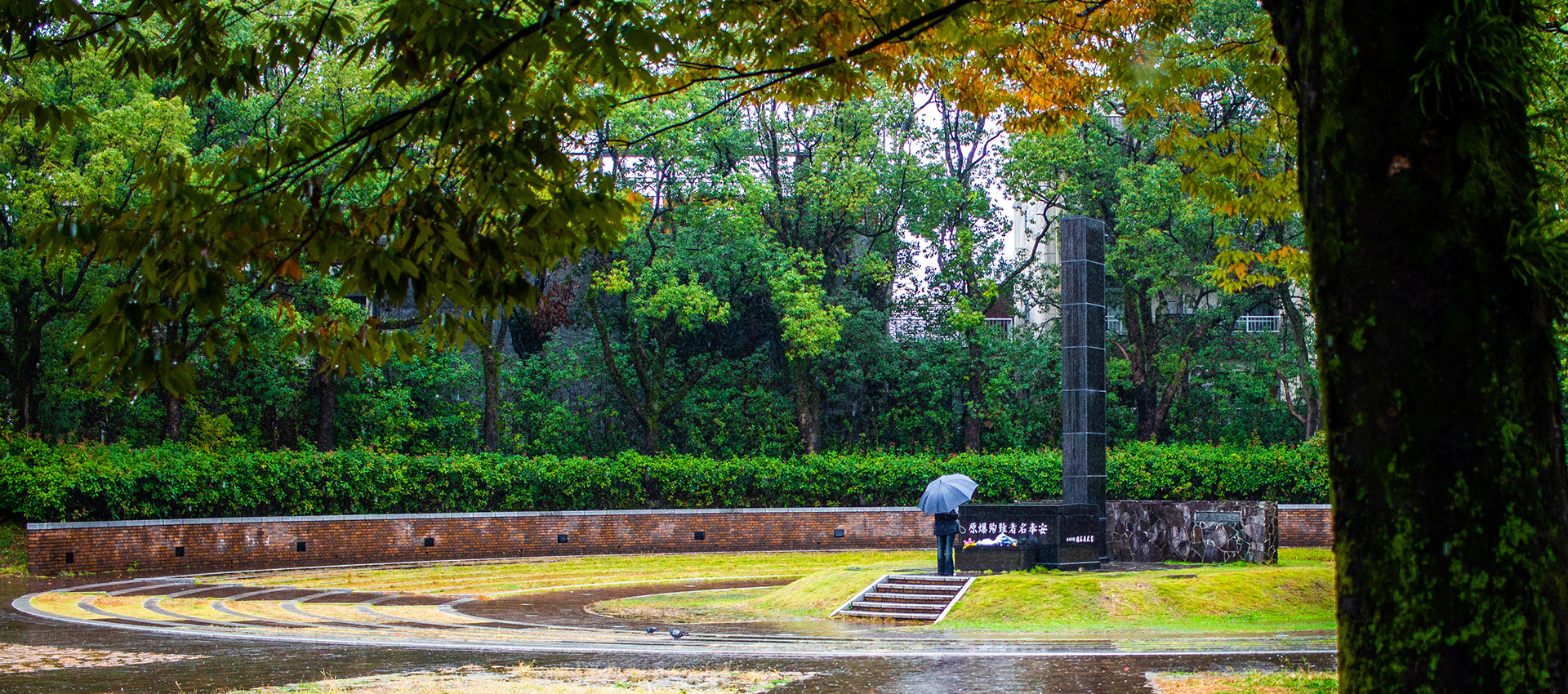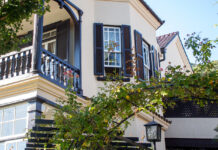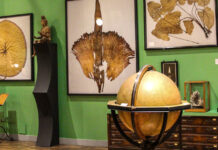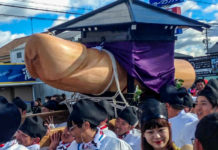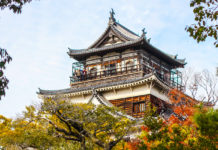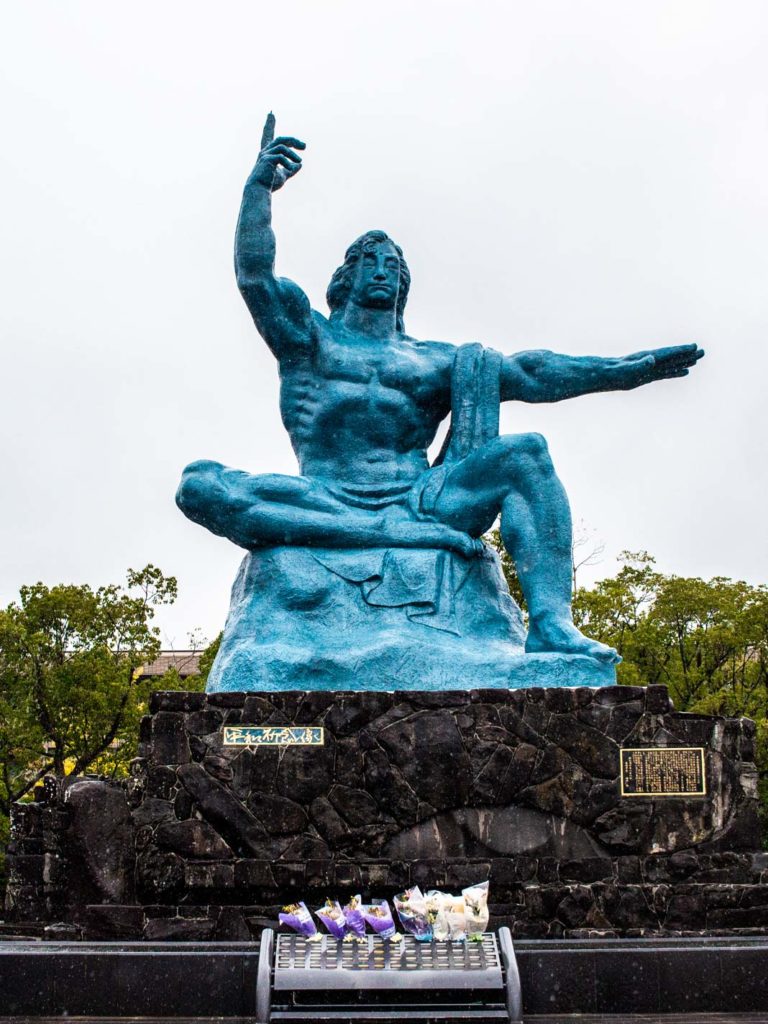
After visiting the Nagasaki Atomic Bomb Museum, I made my way outside into the grey and drizzly Autumn day to explore ground zero. At 11:02 am on August 9th, 1945, the ‘Fat Man’ atomic bomb detonated 500 meters above ground in this area. Over the years, the museum was built nearby along with two parks in remembrance of the victims: the Hypocenter Park and the Nagasaki Peace Park.

Hypocenter Park
From the museum, I followed the signs downhill to reach the Hypocenter Park first. As its name would suggest, this is the location of the bomb detonation. At the time, everything within a 2.5km radius was destroyed in the 3,000ºC heat and it was thought that plants wouldn’t grow until the year 2020. Amazingly, this wasn’t the case and the area is now lush with trees that began growing months after the blast. Like phoenixes from the ashes, they are a symbol of hope and regeneration. This area is particularly striking in spring when the 500 cherry blossom trees burst into a soft pink haze.
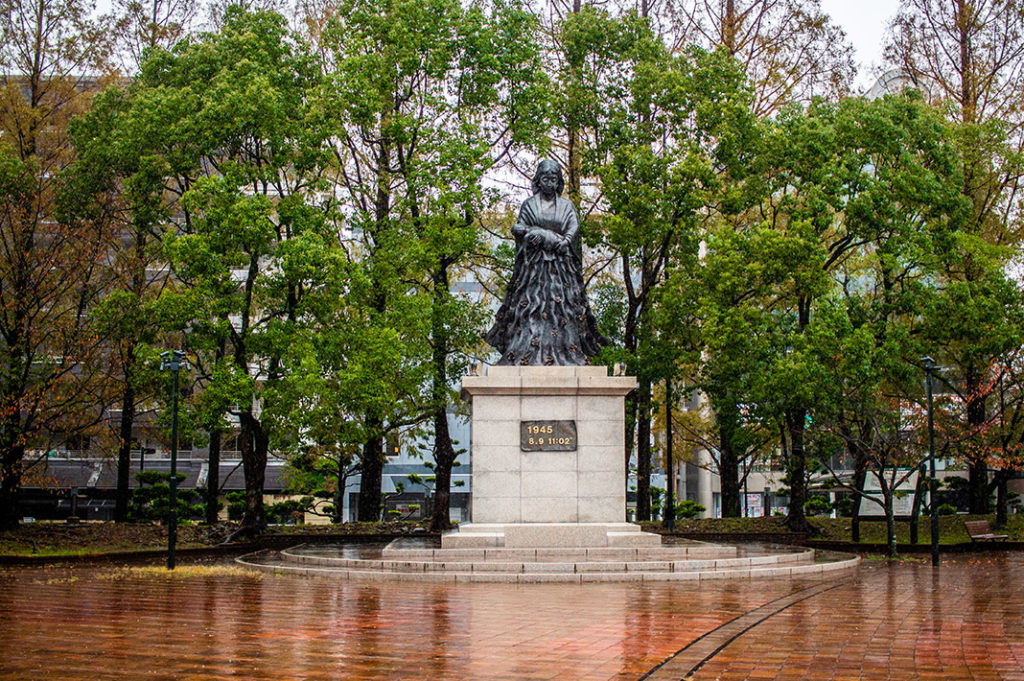
The circular park contains a 50th Anniversary Memorial Monument, some relocated ruins of the Urakami Cathedral and the large Hypocenter Cenotaph unveiled in 1952. This is the place to pray for the souls of the victims, whose names are enshrined in the box before it. When I was there, I witnessed a beautiful moment where somebody stood praying for a minute or so, the park almost to themselves.
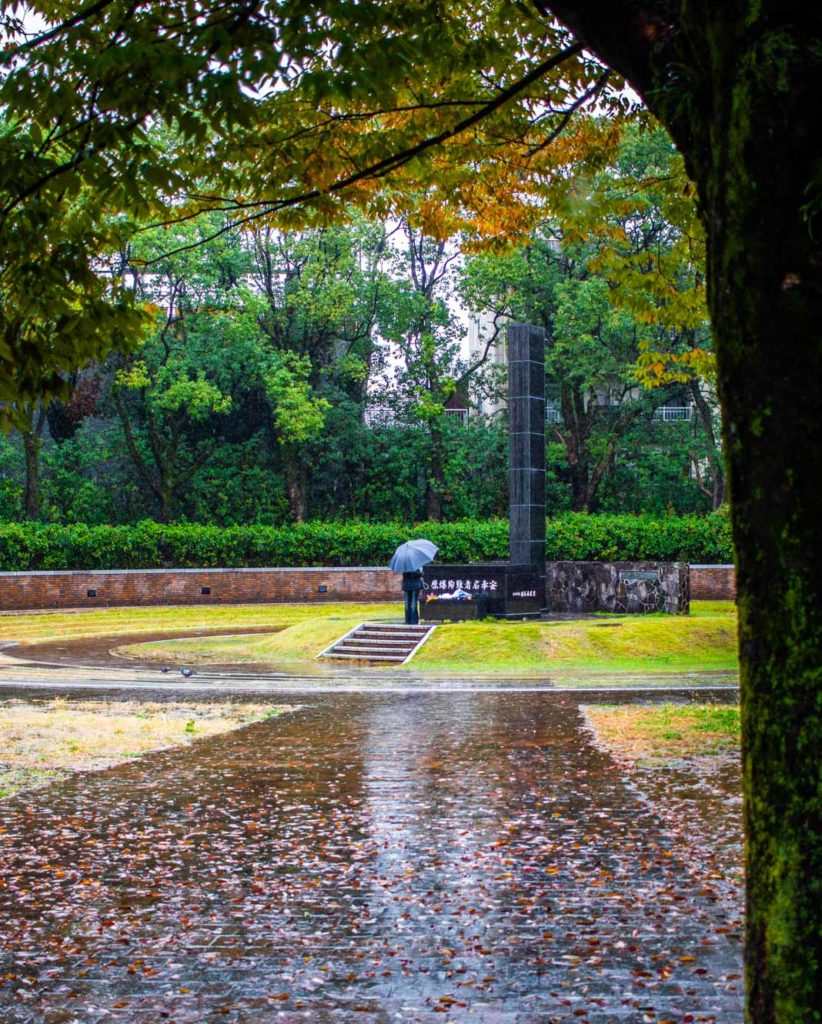
There is a small river running alongside the park, decorated with colourful banners wishing for peace. If you descend the steps toward the river, you can see a glass window looking onto a section of the earth’s strata from the time, complete with rubble and melted artifacts. It’s a sobering reminder of what happened here all those years ago.
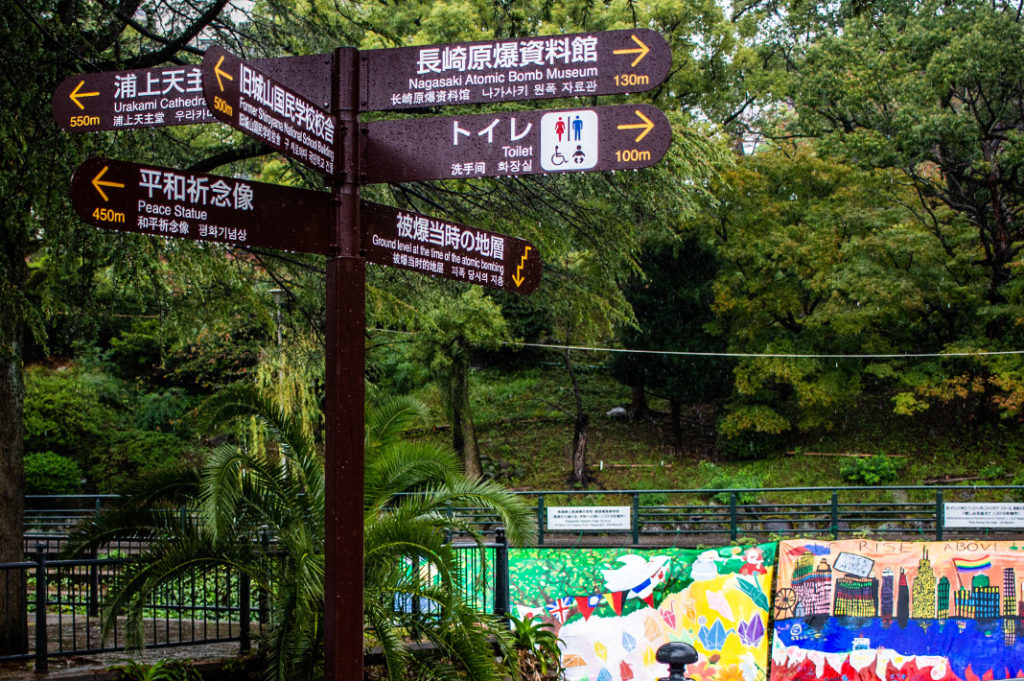
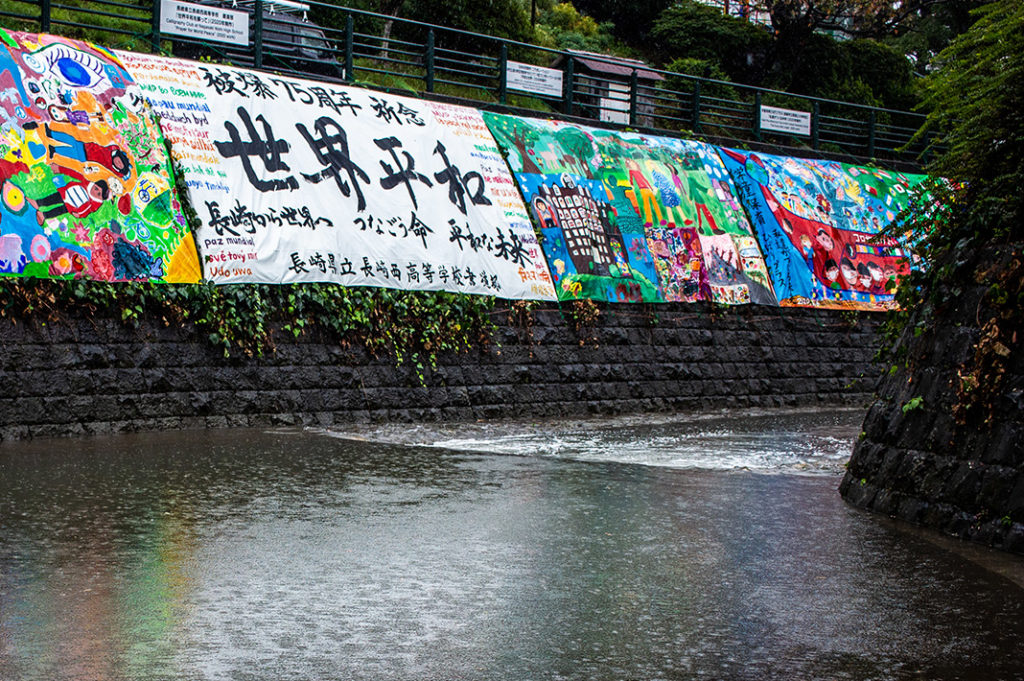
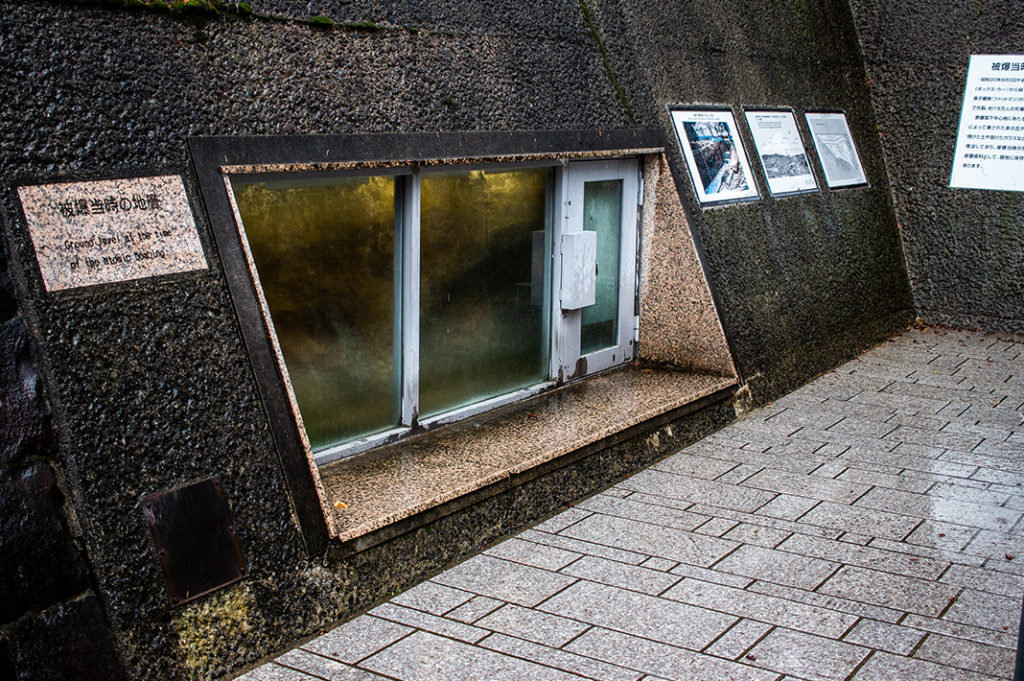
Peace Park
A little further along the street lies the Peace Park, opened April 1, 1955. Take the stairs or escalator up and you’ll soon come to the ‘Fountain of Peace.’ This is yet another tribute to the victims of the bombing, particularly those who died in search of water.
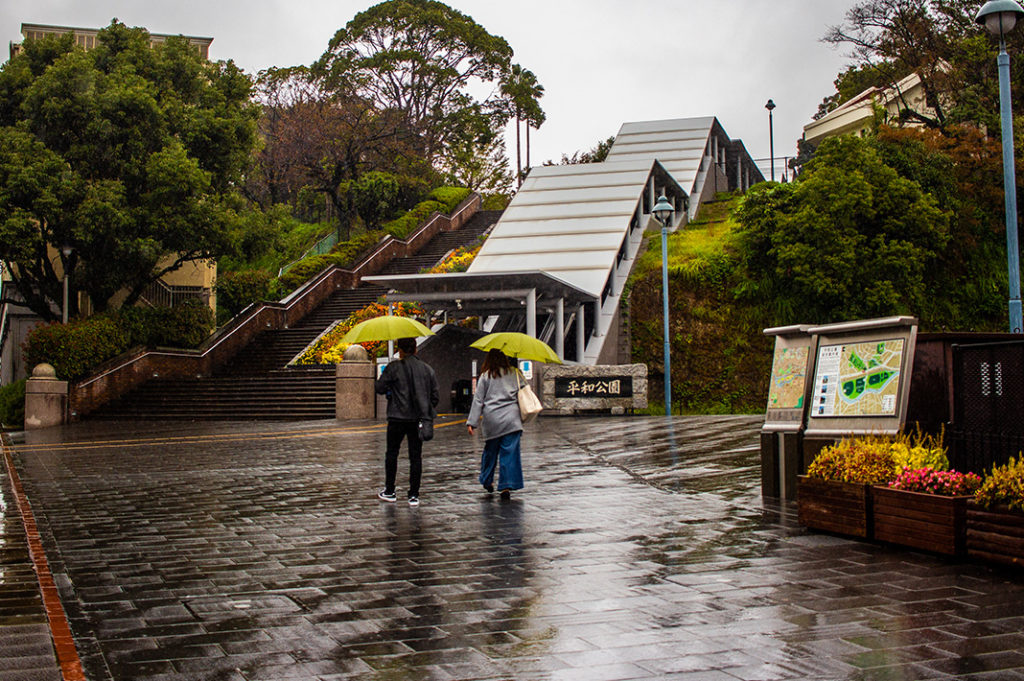
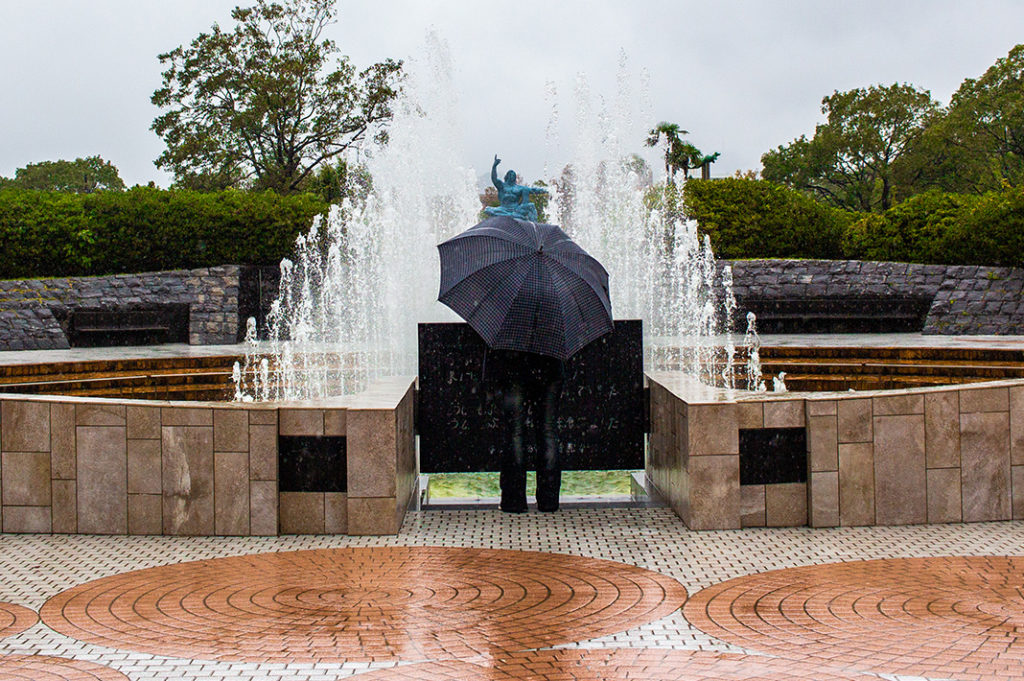
Continue along a little further and you will arrive at the iconic ‘Peace statue’, a 30 tonne bronze statue (now an oxidized blue) completed in 1955 by sculptor Seibo Kitamura. It’s a rather curious pose which carries significant meaning. One hand points to the sky, toward the bomb, while the other arm stretches out in a gesture of peace. The right leg is tucked in, as though in a half-meditative pose, while the left leg is firmly planted, ready to stand up and get to work. The statue’s eyes are also closed, it is said, in prayer.
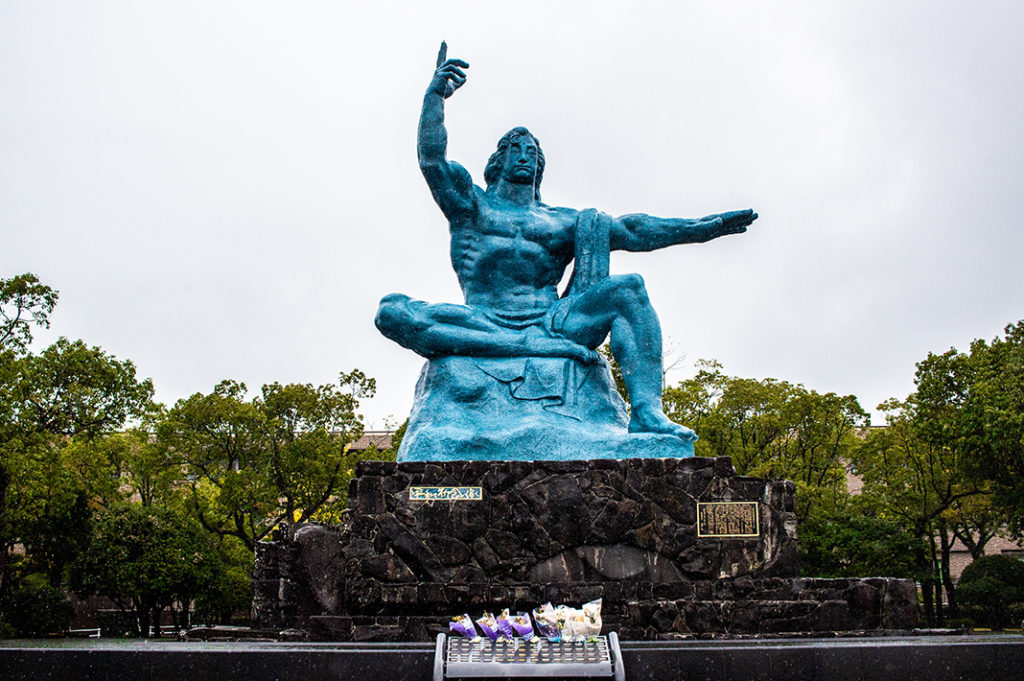
On either side of the statue stand two origami towers, laden with colourful bushels of paper crane wishes.
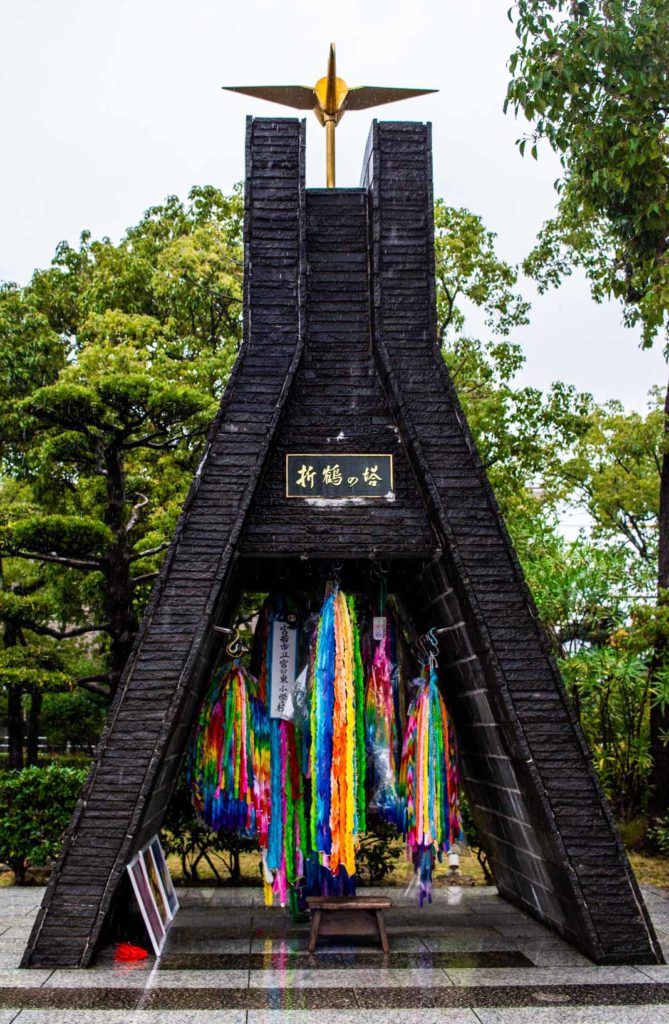
If you head beyond the statue, you can enjoy a view of the surrounding area, with the new Urakami Cathedral standing proud.
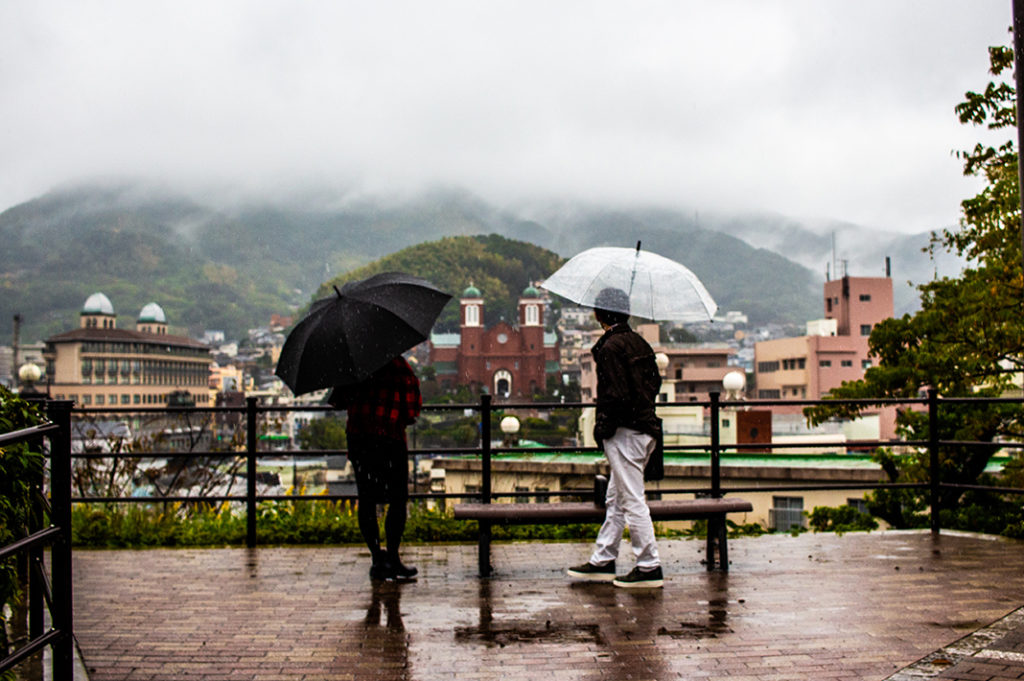
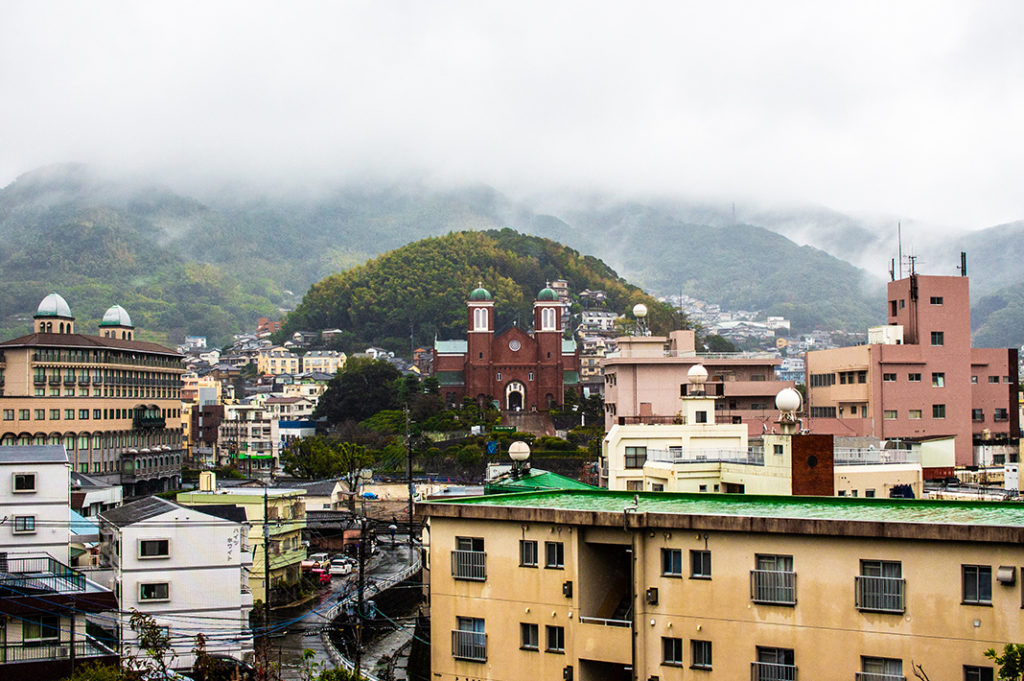
Peace Park location and access
The park is located slightly out of the city, meaning you’ll need to catch a tram or bus to get there. We should be thankful for this journey though. If the bomb had dropped on time and hit the intended target in the center of the city, many more lives would have been lost. As it happened, the damage was confined to the Urakami Valley and this bomb, even more powerful than the Hiroshima bomb, could not do its worst.
To get to the Nagasaki Peace Park from the Nagasaki Station area, take tram #1 or #3 bound for Akasako and get off at the ‘Peace Park (Heiwa Koen)’ stop after 11 minutes. Those coming from the airport should catch an Airport Limousine Bus bound for Nagasaki Station (via Showmachi/Sumiyoshi) from Platform 4 to the ‘Peace Park’ stop. This should take around 40-45 minutes.
When you visit, take some time to think of all the lost souls and pray that nobody ever experiences an event like this again. If you happen to travel to Hiroshima, be sure to visit their Peace Memorial Park also.
Post by Japan Journeys.



